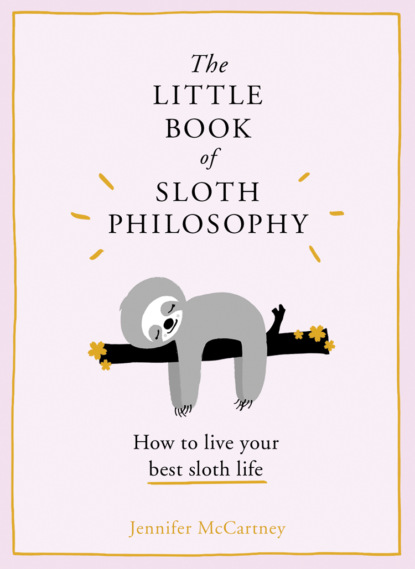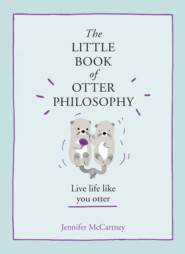По всем вопросам обращайтесь на: info@litportal.ru
(©) 2003-2024.
✖
The Little Book of Sloth Philosophy
Автор
Год написания книги
2018
Настройки чтения
Размер шрифта
Высота строк
Поля
LEONARDO DA VINCI
Guess how long it took famous sloth-philosophy hero da Vinci to finish the Mona Lisa? (Keep in mind the painting is only 21 by 30 inches.) A year? Three years? Scholars think it could have taken as many as fifteen. For the purposes of comparison, keener Michelangelo took just four years to paint the entire Sistine Chapel. Today, few of us care how long it took anyone from history to do anything – all that matters is that eventually, when they felt like it, they did it. Da Vinci also took 25 years to complete a seven-month commission – his first payment for Virgin of the Rocks being received in 1483 and the final one in 1508. And what was he doing with all that downtime? Doodling. Inventing the helicopter and the parachute and the tank.
LORD MELBOURNE
Lord Melbourne was by all accounts an unexceptional English prime minister. He didn’t oversee any wars or enact any notable policies. He’s mostly remembered for his extramarital affairs while in office and for his close relationship with Queen Victoria. Doing nothing was his default position. ‘Why not leave it alone?’ was his mantra (along with the words ‘delay’ and ‘postpone’). He was a man who served in his job adequately – we can all aspire to that.
FRANK LLOYD WRIGHT
In a situation that may be familiar to any sloth-philosophy adherent (and one that will strike fear into those conditioned to believe everything should always be done well in advance with months of preparation), witness Frank Lloyd Wright’s last-minute scramble to show he’d been working on a commission he’d actually ignored. According to his apprentices, Wright received an unexpected call from his patron, Edgar Kaufmann Sr, who mentioned he was in the neighbourhood and wanted to stop by to see the plans for his new house, Fallingwater. Wright had told the businessman that he’d been working on it when he’d done absolutely nothing since their original meeting nine months earlier. In the two hours it took Kaufmann to drive to see Wright, the architect quickly drew up plans for the now world-famous design. A lesson to all of us that what looks like laziness is often just the most efficient way of doing things. Why spend nine months working on something that can be done in two hours?
EDITH WHARTON
The famous American author of House of Mirth liked to write in bed. (Perhaps if we all had an estate in Massachusetts, we might be inclined to do the same.) Her friend Gaillard Lapsley described a typical day for the author: ‘She would have her writing board perilously furnished with an ink-pot on her knee, the dog of the moment under her left elbow and the bed strewn with correspondence, newspapers and books.’ Dogs, books and a bed. Sounds perfectly reasonable, doesn’t it? No grey cubicles or fancy desk chairs needed to get proper work done. In fact, the Edith Wharton Restoration organisation has restored the author’s luxury bedroom suite (bedroom, boudoir and bath) where she wrote, so you can go see for yourself and be inspired.
COLETTE
Colette was in her thirties and felt like a failure, her writing career not yet having taken off. (In a world of over-achieving 17-year-olds it was only too easy to feel like you’d aged out and missed your chance at fame.) Nevertheless, she persisted, with the help of a very strict writing routine: Colette would only begin to write after she’d groomed her French bulldog. Sounds reasonable.
‘To write is the joy and the torment of the idle,’ she said.
Part Two
Health and Wellness (#ulink_c940b92f-8b1c-5bc1-bd2d-d222db6f21ea)
In a world of extreme sports, 85-hour work weeks and fast food, the sloth philosophy of health and wellness can help you slow down, relax and regain your equilibrium.
Sloth Philosophy
Slow down for better health
‘For fast-acting relief, try slowing down.’
Lily Tomlin
Sloth Fact: Sloths are the slowest mammals on earth. On the ground their top speed is about 4 metres per minute. In an emergency (must use the toilet in the next four or five days!) they can do about 4.5 metres per minute.
Sneaker companies, fitness bloggers and the Olympics want us to believe that extreme sports and intense physical exercise are admirable endeavours. That’s because high-intensity workouts with lots of cardio have become synonymous with discipline and dedication, in addition to being necessary for our general health and wellbeing. Forget moderation and just run a marathon or do fifty crunches a day or climb Mount Kilimanjaro – this is the path to wellness and longevity we’re encouraged to pursue. God help anyone born with bad ankles or an inner-ear issue.
But now the sloth philosophy is here to let you know that working out is for chumps. Or, to put it more mildly, there’s more than one way to stay healthy and it doesn’t involve pooping yourself while running an 18-hour ultra-marathon. Scientists are now learning what sloths already know: moving slowly has its benefits. That’s right. Activities like yoga and tai chi (also known as slow-movement therapy) have been proven to reduce chronic pain. Practitioners of these chill workout routines even report taking fewer opiates. And a 2008 study conducted at Tufts Medical Center in Boston found that 12 weeks of tai chi helped reduce pain and stress levels in arthritis patients. One theory about why these low-impact exercises work so well is that the slow movement increases our relaxation response. This, in turn, reduces our stress response and boosts our immune function. Even a brisk walk can be beneficial – and it’s much easier on the knees than running.
No matter what kind of slow exercises you choose to do, slow, rhythmic breathing and controlled movements are key. Remind you of anything? Right, sloths. So remember that there’s more than one way to get into shape and improve your health.
Sloth Philosophy
Breathe deeply – even if you’re upside down
Sloth Fact: A sloth’s internal organs are fixed in place, to keep their weight away from the diaphragm and avoid crushing its lungs. This allows it to breathe easily in any position – an evolutionary necessity, given that the sloth’s favoured position is upside down.
Breathing properly should be an easy thing to do. Our lives depend on it. I’m breathing right now, you might think. What’s the big deal? The problem is, we’re often not breathing effectively, and this can negatively impact our health. We’re so tense, or hunched over, or distracted that we’re barely taking in or exhaling more than a little puff of air. Computers and stress are the main culprits. Bad posture as we tap away on our laptops means our ribs are digging into our diaphragms, so our lungs don’t have room to expand. Stress can make our breath short and shallow – a condition known as underbreathing.
Breathing deeply is an important practice to develop because it can reduce stress and lower blood pressure. It promotes healing by increasing oxygen levels in the blood and it’s even thought to reduce inflammation. A 2016 study at the Medical University of South Carolina found that just 20 minutes of breathing exercises resulted in a decrease in salivary cytokines – a biomarker for inflammation. That means a few minutes of mindful breathing can actually benefit our bodies on a molecular level. And because the wonders of better breathing are scientifically proven, you’ll find these techniques practised by everyone from yogis to military personnel to athletes. So straighten up. Set your shoulders back. Give those lungs room to expand. And take a deep breath. Take two. Keep it up. Feels good, right?
Sloth Philosophy
Seek the quiet place
Sloth Fact: Sloths have teeny, tiny ears and can’t hear very well. Most of their life is spent in relative silence. Ah, bliss …
Noise pollution can be harmful to our physical and mental health, but, unlike sloths, we can’t retreat to the treetops whenever we feel overwhelmed. Prolonged exposure to loud noise can cause hearing loss, sleep disturbances, high blood pressure and increased stress levels. The World Health Organization recommends decibel levels of no more than 50 in residential areas, but that’s wishful thinking for a large portion of the population. (To put that in context, sirens are 120 decibels, while construction noise can measure between 80 and 90 and the noise from a passing subway train is about 80.) Our cities have become so loud that scientists have discovered that robins are now singing at night rather than during the day. Whatever the birds have to communicate (news of another royal birth?) it can’t be done during the day in our major cities. Not surprisingly, perhaps, 8 of the UK’s top 10 districts ranked by noise complaints per 1,000 residents are in London. Londoners do love a good knees-up. And New York City is no better, with hundreds of thousands of noise complaints lodged every year. Not for nothing is it known as the city that never sleeps!
While most of us can’t help where we live, we can take steps to mitigate the noise pollution we experience. So unless you’re planning to pick up and move to an off-the-grid tiny house in the wilderness sometime soon, here are some common-sense ways to increase the level of peace and quiet in your life:
Out and about:
Wear earplugs or noise-cancelling headphones.
Avoid busy construction sites, loud parties and subways; take a walk in the park instead – see what the foxes are up to.
At home:
Consider sound-proofing windows if you’re on a busy street.
Invest in a white-noise machine (or download a white-noise app).
Send your children to boarding school.* (#litres_trial_promo)
Trade the yappy dog for a quiet cat.† (#litres_trial_promo)
Вы ознакомились с фрагментом книги.
Приобретайте полный текст книги у нашего партнера:
Приобретайте полный текст книги у нашего партнера:






